Near-Infrared Region Measurement and Related Considerations Part 2
In the article "Near-Infrared Region Measurement and Related Considerations Part 1" that appeared in FTIR TALK LETTER, Vol. 9, we mainly described the characteristics of transmittance measurement in the near-infrared region as well as some points that must be considered to perform this measurement. With measurement methods other than transmittance measurement, there are some characteristics and considerations that differ from those pertaining to measurement in the mid-infrared region here, in "Near-Infrared Region Measurement and Related Considerations Part 2", we introduce these with the aid of actual examples of sample measurement.
Characteristics of Near-Infrared Light Absorbance
First, we would like to review some of the characteristics of near-infrared light absorbance.
Near-infrared light generally refers to light within the wavenumber range of 12,500 to 4,000 cm-1 (wavelengths from 800 to 2,500 nm). Absorption of near-infrared light, like that of mid-infrared light, is based on the vibration of the material. However, near-infrared light absorption is much weaker in intensity as compared with mid-infrared light absorption, since near-infrared light absorption is based on overtones and combined tones in the mid-infrared light region. Therefore, measurement of samples showing weak absorption is difficult, but the fact that samples can be measured without being diluted is an advantageous feature.
Furthermore, as solvents themselves show weak absorption, aqueous solutions are also relatively easy to measure.
Diffuse Reflectance Measurement
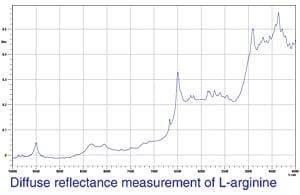
Fig. 1 Near-Infrared Diffuse Reflectance Spectrum of L-arginine
In addition to transmittance measurement, there are several other methods that can be used to measure near-infrared light absorption. Diffuse reflectance measurement is a method that is often used for the near-infrared region.
As with transmittance measurement, there is relatively weak sample absorption when diffuse reflectance measurement is used in the near-infrared region, so dilution using KBr powder or any other form of pretreatment is not required, and direct measurement is possible. The attachments used for diffuse reflectance measurement include diffuse reflectance accessories and integrating spheres.
In diffuse reflectance measurement, a reference reflector called reference is used for background measurement (reference measurement). Unlike transmittance measurement, no simple, effective attachments that can obtain absolute values are commercially available; consequently, measurement is of the reflectance relative to that measured with the reflector used for background correction.
A gold (vapor-deposited) mirror often acts as the reflector used for background correction. Although gold mirrors have absorbance in the visible light region, they exhibit extremely high reflectance in the near-infrared region. In some cases, an aluminum mirror or barium sulfate is used as the reflector.
One point to note about diffuse reflectance measurement is that the amount of near-infrared light absorption varies with the particle size and the density of the sample being analyzed. For smaller particles, the optical path is longer, and for denser samples, there are more opportunities for absorption by particles and, consequently, the absorption intensity is larger.
One of the attachments used in diffuse reflectance measurement is the NIR integrating sphere. This makes it possible to analyze various types of samples, including powders, tablets, and pastes.
A gold diffuse reflectance mirror with a rough surface (a scattering surface), rather than a mirror-finished surface, is used as the reference reflector. After reference measurement, the sample is placed on the window at the top of the attachment, and measurement is performed.
Fig. 1 shows the results obtained by analyzing L-arginine using a gold diffuse reflectance mirror as the reference.
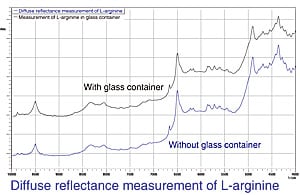
Fig. 2 Near-Infrared Diffuse Reflectance Spectrum of L-arginine Obtained with and without Glass Container
Measurement can be performed simply by placing the sample on the top of the integrating sphere. The sample does not need to be diluted.
In the near-infrared region, as in the visible light region, hardly any absorption is observed with glass or quartz. For this reason, diffuse reflectance measurement is possible for a sample placed inside a glass container.
Fig. 2 shows the results obtained by performing diffuse reflectance measurement on L-arginine placed in a glass container.
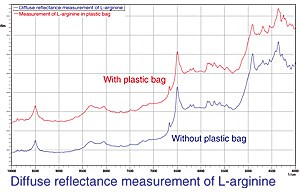
Fig. 3 Near-Infrared Diffuse Reflectance Spectrum of L-arginine Obtained with and without Plastic Bag
To facilitate comparison, data obtained by measurement without a glass container (same as Fig. 1) is also shown. It can be seen that there is no difference between the two sets of data.
Using the fact that absorption is less in the near-infrared region than it is in the mid-infrared region, samples contained in plastic bags are sometimes tested by performing direct measurement through the plastic.
The absorption of a thin plastic bag is extremely small and a significantly greater amount of absorption is obtained for the contents.
Fig. 3 shows the results obtained by performing diffuse reflectance measurement on L-arginine in a plastic bag.
To facilitate comparison, data obtained by measurement without a plastic bag (same as Fig. 1) is also shown. It can be seen that there is no significant difference between the two sets of data. Of course, a small amount of absorption by the plastic bag is observed in a neighborhood of 5,780 cm-1 and 4,250 cm-1. Overall, however, no significant absorption by the plastic bag is observed, making it possible to obtain a spectrum for the contents.
With near-infrared diffuse reflectance measurement, then, dilution is not required as pretreatment, as it is with the midinfrared region, and measurement is therefore relatively easy.
Measurement with Fiber
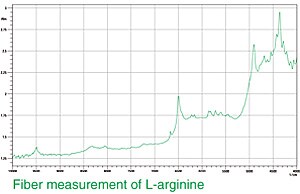
Fig. 4 Near-Infrared Reflection Spectrum of L-arginine Obtained with Fiber
An attachment that is useful when the sample is too big to put in the instrument's sample compartment is the fiber probe. Fiber measurement is used for the mid-infrared region but fibers that offer high transmittance efficiency over the entire mid-infrared region are still in the development stage. When using fiber in this region, there are wavenumber regions in which measurement is not possible due to the absorption of the fiber material itself, and this method can only be used for a imited range of samples.
On the other hand, there are fibers that offer high transmittance efficiency over the entire near-infrared region, so fiber measurement is relatively simple in this region.
Fig. 4 shows the results obtained by performing reflectance measurement using a near-infrared reflection-type fiber probe. Because light attenuates as it passes along the fiber, there is more noise than there is with an integrating sphere.
The data obtained, however, is similar to that obtained with an integrating sphere.
As with an integrating sphere, fiber can be used in applications such as analyzing the contents of plastic bags.
Near-Infrared Specular Reflectance Measurement
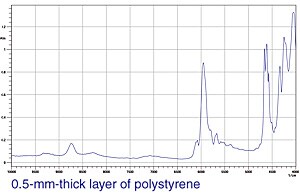
Fig. 5 Near-Infrared Specular Reflectance Spectrum of Polystyrene
In addition to diffuse reflectance measurement and fiber measurement, which we have described above, specular reflectance (reflectance absorption) measurement is also possible.
Specular reflectance measurement is performed using a specular reflectance accessory. Also, with specular reflectance measurement in the near-infrared region, a gold or aluminum mirror is used for reference measurement. As the absorption intensity is low, in comparison with measurement in the mid-infrared region, the measurement of thick layers formed on the top of metals is relatively easy.
Fig. 5 shows the results obtained by performing nearinfrared specular reflectance measurement using a specular reflectance accessory. The sample was a 0.5-mm-thick layer of polystyrene on metal.
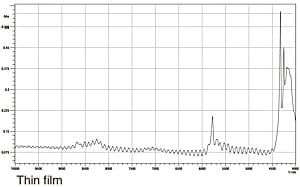
Fig. 6 Near-Infrared Specular Reflectance Spectrum of Thin Film
Also, film-thickness calculation is easier in the near-infrared region than it is in the mid-infrared region. Fig. 6 shows the results obtained in the measurement of a thin film on metal.
In the near-infrared region, because there is little absorption by the sample, interference fringes can be observed with hardly any influence of sample absorption. For this reason, near-infrared spectra are effective for film-thickness measurement.
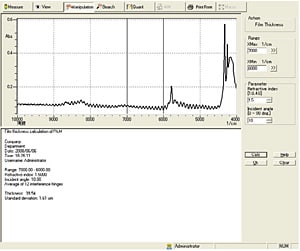
Fig. 7 Film-Thickness Calculation Window
For the sample whose results are shown in Fig. 6, performing calculation of the film thickness for the wavenumber range 7,000 to 6,000 cm-1 by entering a refractive index of 1.5 gave a result of 39.5 μm. Fig. 7 shows the actual film-thickness calculation window.
Summary
Here, we have described the characteristics of diffuse reflectance measurement, fiber measurement, and specular reflectance measurement in the near-infrared region, and have detailed some points to be considered to ensure execution.
Compared with measurement in the mid-infrared region, there are many advantages, such as the ability to perform measurement without pretreatment. There are disadvantages, however, such as the fact that the spectrum database is not as comprehensive as that for the midinfrared region and the fact that absorption exists that is difficult to associate with functional groups (e.g., combination tones), making it difficult to obtain qualitative information.
By understanding the various characteristics of the measurement methods used for the near-infrared region, together with the points to be considered for proper execution, you can expand the range of measurement and analysis techniques at your disposal and perform measurement with greater efficiency.
In addition to the methods we described so far, various other types of measurement are used for the near-infrared region, such as simultaneous multicomponent quantitation based on chemometrics.
On another occasion, we would like to make a presentation on chemometrics.






